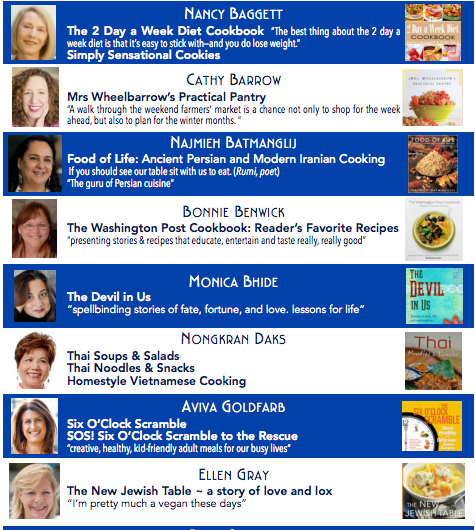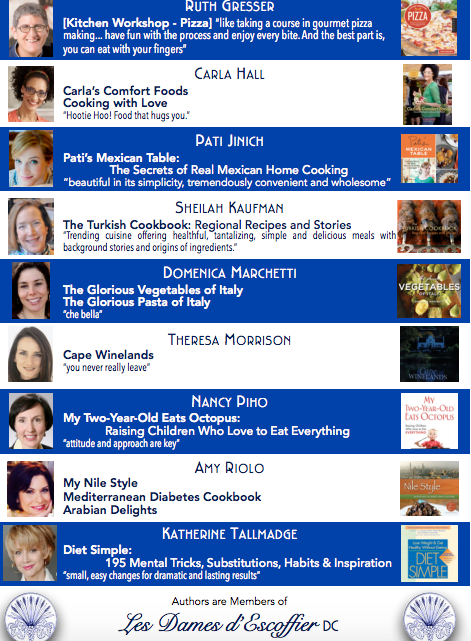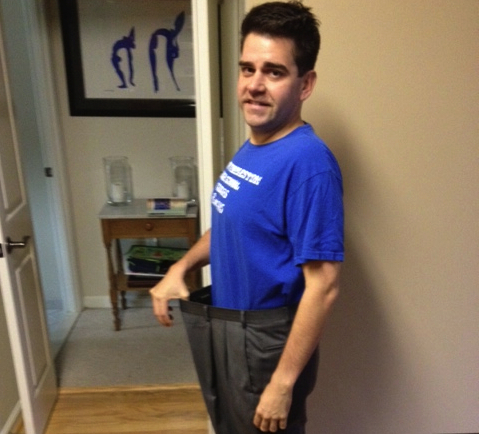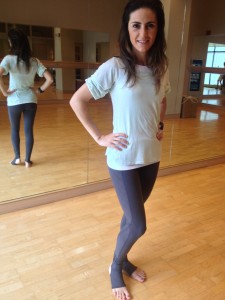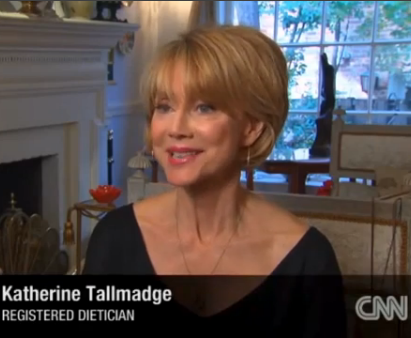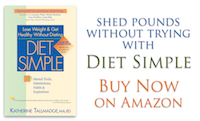Do It Now! New Year’s Resolutions Really Work
- At January 05, 2015
- By Katherine
- In Articles, News
 0
0
The GOOD news: According to the author of a study published in the Journal of Clinical Psychology, “You are ten times more likely to change by making a New Year’s resolution.” The study showed that 50 percent of people who seized the New Year as an opportunity for change met their goals.
The BAD news: It’s not that simple. There are some basic steps you need to follow to turn a wish for change into reality. Here’s what the study shows will work:
7 Steps to Making Your New Year’s Resolution Stick
1. Set Your Positive Long Term Goal. Have an exciting vision of yourself having achieved your goal. See yourself – how you look and feel – crossing a goal line, as professional athletes do; envision how great you’ll look in those upcoming wedding photos; see your doctor congratulating you for your success
2. Develop a Specific Action Plan for the Year. “In one year I will achieve a 50-pound weight loss.” Develop a sense of urgency about your goal by pondering the negative consequences of not making your goal, “How would it feel to be the same weight next year?”
3. Break up your Goal into Bite-Size Pieces. It’s more gratifying to achieve your goals every day or every week. For instance, instead of thinking about your year’s goal, say, “I will lose 1 pound per week,” or “daily I will eat fruit and/or veggie snacks.” Again, ponder the consequences of your actions, “Should I roll back into bed instead of getting up to exercise? Do I want to feel good today – or do I want to feel crummy today?”
4. Reward yourself for your Successes. The latest research finds financial rewards can be very successful. But daily pats on the back are important, too.
5. Don’t Make a Backup Plan, as you are less likely to work toward your main goal and may more readily accept failure
6. Develop Genuine Confidence. It’s a potent predictor of who succeeds.
7. Expect Occasional Slips. Studies of successful weight losers show they experience similar stressors and slips as relapsers, they just react differently to them: They pick themselves up, dust themselves off and start all over again.
The battle of the bulge is won at the margins. Sweeping dietary overhauls are impractical and don’t work over time. Shrewd, small, concrete, positive changes which can be easily incorporated into your daily routine lead to success.
Meet Carla Hall & 17 Top Women Chefs for a Holiday Book Party
- At December 11, 2014
- By Katherine
- In News
 0
0
CULINARY WOMEN IN WORDS
Holiday Book Party December 14, 3 – 6 pm, at Salon Ilo, Georgetown
Presented by Les Dames d’Escoffier DC*
On December 14, Seventeen of the region’s esteemed women leaders in food, beverage, nutrition and hospitality – including top chef Carla Hall – put pen to paper in more than twenty highly-regarded cookbooks, healthy-eating guides, real-food for children, quick dinner ideas and more. Savor flavors of Italy, Mexico, Persia, Thailand, Jewish heritage, Southern fare, Mediterranean cuisine and more. Preserve nature’s bounty, bake pastries, eat octopus, find secrets to tasty meals for weight-loss and diabetes, and travel through wine country. Meet each author at this signature holiday book-signing party. Enjoy tasty morsels from the cookbook-author recipes, and festive beverages. Delight the epicureans in your life with the gift of autographed books, signed specially to them.
WHAT: Culinary Women in Words – holiday book party
WHERE: Salon ILO 1637 Wisconsin Ave NW, Washington, DC 20007
DATE: Sunday, December 14, 2014
TIME: 3:00 – 6:00 p.m.
COST: $25 donation to Les Dames DC in advance; $35 at the door. RSVP on Eventbrite
*Les Dames DC is a non-profit 501(c)(3) invitational organization of women leaders in the food, beverage, hospitality and related industries who use their talents and influence for community outreach and through grants, mentoring, and educational programs, help to support women to succeed in these industries. Les Dames d’Escoffier was founded in 1973 in New York City. Les Dames DC was established in 1981.
What’s More Damaging: Sugar? or Artificial Sweeteners?
- At October 08, 2014
- By Katherine
- In Articles, News
 1
1
Katherine’s 5 Tips are at the end of the article…
For years, my clients have asked me, “Is it better to eat ‘sugar-free’ yogurt? Or, yogurt with fruit on the bottom with all that sugar? What about sugar in my coffee? Sugar-sweetened beverages, like soft drinks?” My answer has alway been, to my clients’ surprise, “A little sugar won’t hurt. Eat the yogurt you enjoy the most, even if there’s a little jam at the bottom! And a teaspoon of sugar in your coffee shouldn’t do any harm.” New scientific research may prove my moderate approach has been right all along.
Artificially sweetened beverages and foods are seen as guilt-free pleasures, because they are lower in calories – or even zero calories – compared to other similar foods. You may think of them as a great choice when you’re trying to lose weight or trying to keep blood sugar in check. But some surprising new research suggests that artificial sweeteners might actually do the opposite, “by changing the microbes living in our intestines [1],” according to experts at The National Institutes of Health.*
To explore the impact of various kinds of sweeteners on the zillions of microbes living in the human intestine (referred to as the gut microbiome), an Israeli research team first turned to mice. One group of mice was given water that contained one of two natural sugars: glucose or sucrose; the other group received water that contained one of three artificial sweeteners: saccharin (the main ingredient in Sweet’N Low®), sucralose (Splenda®), or aspartame (Equal®, Nutrasweet®). Both groups ate a diet of normal mouse chow.
To their surprise, the researchers discovered that many animals in the artificial sweetener groups—especially those that drank saccharin-sweetened water—developed a condition called glucose intolerance, which is characterized by high blood glucose levels and is an early warning sign of increased risk for developing type 2 diabetes. In contrast, the animals that drank sugar water remained healthy.
The result was puzzling. These mice weren’t consuming natural sugars, so what was raising their blood glucose levels? The researchers had a hunch that the answer might lie in the gut microbiome—since those microbes play a vital role in digestion. Their suspicions were borne out. When they used DNA sequencing to analyze the artificial sweetener group’s gut microbiome, they found a distinctly different collection of microbes than in the animals drinking sugar water.
The next step was to distinguish whether these changes in the microbiome resulted from high blood glucose, or caused it. When the researchers used antibiotics to wipe out the artificial sweetener group’s gut microbes, their blood glucose levels returned to normal—evidence that the gut microbes were actively causing glucose intolerance. Additional proof came from experiments in which the researchers transplanted microbes from both groups of mice into the intestines of a mouse strain that had been raised in a sterile environment from birth. The germ-free mice that received microbes from the artificial sweetener group developed glucose intolerance; those getting microbes from the sugar group did not.
But what about humans?
The research team examined clinical data from 400 people taking part in an ongoing nutrition study. That analysis showed that, compared to people who didn’t use artificial sweeteners, long-term users of artificial sweeteners tended to have higher blood glucose levels and other parameters often associated with metabolic diseases like diabetes, obesity, and fatty liver.
Next, the researchers asked seven healthy human volunteers, who had never previously consumed foods or beverages containing artificial sweeteners, to consume the daily maximum dose of saccharin allowed by the U.S. Food and Drug Administration for six consecutive days. Of the seven volunteers, four developed glucose intolerance, while three maintained normal blood glucose regulation. The researchers then took intestinal microbes from human volunteers and transplanted them into germ-free mice. Microbes from humans with glucose intolerance also triggered glucose intolerance in the mice, while microbes from humans with normal blood glucose had no effect.
Previous studies have associated changes in the gut microbiome with obesity and diabetes in humans [2, 3, 4]. But the latest findings, which still must be confirmed in larger studies and by other groups, advance our knowledge one step further by suggesting that artificial sweeteners may be one of what’s likely to be an array of factors with the power to shape such changes. Who knows what the next piece of that fascinating puzzle might be?
Katherine’s 5 Tips
- Use artificial sweeteners with caution,
- Just a spoonful of sugar/jam/honey can’t hurt – maximum 10% of your calorie needs – for example, if you need 1,500 calories per day, enjoy 150 calories worth of sweets per day,
- As usual, moderation is key. If you have trouble eating too many sweets, find out why and click for strategies,
- Eat plenty of yogurt, which contains natural probiotics, to populate your gastrointestinal tract with healthy microbes (they may help reduce body fat and insulin resistance),
- Eat plenty of high fiber foods, considered “prebiotics,” which increase the effectiveness of the probiotics, helping your gastrointestinal tract stay healthy,
- If you have an interest in learning more about sugar substitutes, take a look at the Center for Science and Public Interest’s “Sweet Nothings: Safe or Scary… The Inside Scoop on Sugar Substitutes.”
References:
[1] Artificial sweeteners induce glucose intolerance by altering the gut microbiota. Suez J, Korem T, Zeevi D, Zilberman-Schapira G, Thaiss CA, Maza O, Israeli D, Zmora N, Gilad S, Weinberger A, Kuperman Y, Harmelin A, Kolodkin-Gal I, Shapiro H, Halpern Z, Segal E, Elinav E. Nature. 2014 Sep 17.
[2] Microbial ecology: human gut microbes associated with obesity. Ley RE, Turnbaugh PJ, Klein S, Gordon JI. Nature. 2006 Dec 21;444(7122):1022-3.
[3] A metagenome-wide association study of gut microbiota in type 2 diabetes. Qin J, Li Y, Cai Z, Li S, Zhu J, Zhang F, Liang S, Zhang W, Guan Y, Shen D, Peng Y, Zhang D, Jie Z, Wu W, Qin Y, Xue W, Li J, Han L, Lu D, Wu P, Dai Y, Sun X, Li Z, Tang A, Zhong S, Li X, Chen W, Xu R, Wang M, Feng Q, Gong M, Yu J, Zhang Y, Zhang M, Hansen T, Sanchez G, Raes J, Falony G, Okuda S, Almeida M, LeChatelier E, Renault P, Pons N, Batto JM, Zhang Z, Chen H, Yang R, Zheng W, Li S, Yang H, Wang J, Ehrlich SD, Nielsen R, Pedersen O, Kristiansen K, Wang J. Nature. 2012 Oct 4;490(7418):55-60.
[4] Gut metagenome in European women with normal, impaired and diabetic glucose control.Karlsson FH, Tremaroli V, Nookaew I, Bergström G, Behre CJ, Fagerberg B, Nielsen J, Bäckhed F. Nature. 2013 Jun 6;498(7452):99-103.
*The article above is from the National Institutes of Health
Photo by www.sugar.org
Two Large Meals (Breakfast & Lunch) are Best at Controlling Weight
- At May 21, 2014
- By Katherine
- In Articles, News
 2
2
- Mark Indre began eating a larger breakfast and a lighter dinner… “I have lost more than 35 pounds and have kept it off for more than two years with Katherine’s Diet Simple program.”
A new study confirmed what I’ve suspected for the twenty (or more) years I’ve been a diet counselor. Eating hearty meals earlier in the day instead of in the evening leads to weight loss and better health, even when the same foods and same calories are eaten.
A recent study published in the scientific journal, “Diabetologia,” found people with Type 2 Diabetes eating a large breakfast and lunch – and no dinner, as compared with those eating six small meals with the same calories – lost more body fat, liver fat, and improved insulin sensitivity.
That’s not to say you shouldn’t be eating dinner, as scientists often exaggerate conditions to get measurable results in their studies. But you can likely use the study’s conclusions to make positive changes for your health and weight, as did my client, Mark Indre.
“I lost more than 35 pounds and have kept it off for more than two years,” said Mark Indre.
Some points to consider…
Does this sound familiar? You get home from work, stressed and ravenous. You head straight for the kitchen, grab a bowl of nuts or a plate of cheese and crackers. You nibble as you’re preparing dinner. After dinner, you settle on the couch, most likely in front of the television, and zone out with some favorite snacks, such as popcorn, chips, nuts, ice cream, peanut butter or sweets—whatever is tasty and easy to grab.
Welcome to the typical American evening! For many people, it’s an endless graze that doesn’t stop until they go to bed.
Evening overeating is an issue that contributes to many peoples’ weight problems. I’ve been surprised at just how many people struggle with this. I used to myself. Even disciplined people who carefully watch their intake during the day break down at night. I can’t count how many times I’ve heard these refrains: “I’m fine during the day, my problem’s at night,” or “If I could control my eating at night, my weight problem would probably disappear…. ”
This is important because more and more research is confirming the importance of eating lighter at night and heavier during the day – for health, not just weight. A recent study published in “Diabetologia” found people who at a large breakfast and lunch – and no dinner, as compared with people with type 2 diabetes who ate 6 small meals – lost body fat and improved insulin sensitivity. This occurred while eating the same calories, just distributed differently.
It’s become clear to me that evening overeating is not just an isolated problem but the convergence of a host of lifestyle issues—stress, exhaustion, loneliness, disorganized eating and hunger.
In today’s fast-paced world, many people are constantly hopping from meeting to meeting or from chore to chore during the day and don’t have time to sit down and eat a decent meal. So we become ravenous. In the evening, there’s more time for eating, so we not only eat larger meals, but continuous ones. Those who are tired or stressed find that food is an easy way to reward themselves at the end of the day. Food can provide a little companionship for the lonely or depressed. Researchers who have identified “night eating syndrome,” the most severe form of evening overeating that affects about five percent of obese people seeking treatment, say it is stress-related.
“We believe it’s a stress disorder which causes people to eat more than one-third of their calories after the evening meal,” says obesity researcher Albert J. Stunkard, who has studied nighttime overeaters since the 1950s and recently co-authored “Overcoming Night Eating Syndrome: A Step-by-Step Guide to Breaking the Cycle” (New Harbinger Publications, 2004).
Evening overeating is an important problem to solve because Americans who eat most of their daily intake of food at night eat more overall calories, according to a study reported in the Journal of Nutrition. And that makes them more susceptible to weight problems.
“The late-night period was when the highest-density foods were eaten. Eating a high proportion of daily intake in the late evening, compared to earlier in the day, was associated with higher overall intake,” researcher John M. de Castro concluded in the study, which analyzed food diaries of about 900 men and women.
De Castro, professor and chair of the department of psychology at the University of Texas at El Paso, also found that evening eating was less satisfying for people, which may help explain why they eat more.
“In the evening, you get lower satiety. People tend to eat very large meals but then eat again shortly afterward,” said de Castro.
For those who succumb to nighttime overeating, I recommend you attack this problem by assessing why this may be happening to you and then devising specific personalized strategies for eating lighter at night. Some points to consider:
Breakfast: De Castro’s study found that a “high proportional intake in the morning is associated with low overall daily intake.” This finding confirms my experience of 25+ years: Eating a bigger breakfast is the single most effective way of curbing evening overeating. Other studies have confirmed the importance of breakfast for maintaining weight loss.
I advise my clients to eat one-third of their daily calories in the morning. For most people, that’s at least 600 calories, much more than they’re used to consuming.
While solving other issues such as end-of-day stress, exhaustion and emotional issues are important, too, I’ve found that nothing works unless morning eating is beefed up first. Eating more in the morning is a scary proposition for many people who fear that they’ll continue their evening overeating on top of the bigger breakfast. But my clients who bite the bullet and give it a try are amazed to find that it reduces cravings and gives them a sense of control, so that it is easier to eat more moderately later in the day.
Interestingly, de Castro found that people are more sated with the food they eat in the morning. “If they eat a large breakfast, they’ll wait a long time before eating again. They get a lot of bang for the buck,” says de Castro.
Organized eating: Researchers have found that most people with the more severe “night-eating syndrome” don’t have regular meal and snack times. I have also found this is true for evening overeaters. Most overeating is due simply to undereating throughout the day and poor planning. I hear so many people say “I have no will power,” or “I hate myself because I have no discipline.” But they somehow regain their “discipline” and “will power” by simply planning and eating regular daytime meals and snacks.
That’s why I advocate cooking in large batches and regular grocery shopping so that you have healthy and delicious foods at your fingertips when you get home from work in the evenings.
Trigger foods: Many people who overeat in the evenings have “trigger” foods, specific foods they crave and are more likely to overeat, such as chips, chocolate or peanut butter. The experts find the avoidance of trigger foods can reduce evening overeating.
Assessing hunger: Your body lets you know what it needs. One key to lasting weight management is being in touch with your body and its signals. In the evening, before eating, get rid of distractions, take a few deep breaths and stop to think if you’re physically hungry. If you’re hungry, eat. If you’re not, or if you’re not sure, you shouldn’t eat.
Stress management: Many people overeat in the evenings as a way to cope with the stress and exhaustion they may feel or to reward themselves at the end of a hard day. But this is a self-defeating response to stress or rewards. When you come home, never head straight for the kitchen. Instead, hop in the shower or tub to decompress, take a walk or stretch. Once relaxed, then decide what you’d like for dinner. Better yet, hopefully you’ve already planned your dinner.
Of course, these actions are only possible if you’ve fed yourself properly during the day and you’re not ravenous.
Reducing behavioral associations: Like Russian scientist Ivan Pavlov’s famous dogs, we can train ourselves to salivate and crave food in connection with just about any activity. Playing cards, eat. Watching a movie, eat. Going to the mall, eat. Talking on the phone, eat. Reading in bed, eat. Watching TV, eat. The experts recommend you eat only when seated at your dining or kitchen table, without distractions, so that you don’t develop an association between eating and any activity, place or person. The only stimulus for eating should be hunger. Distractions tend to reduce inhibitions to overeating.
When to eat: There is no hard-and-fast rule governing the timing of your last meal in the evening. I recommend that evening calories don’t exceed lunch or breakfast calories and that you eat at least two-thirds of your day’s calories before dinner. It’s important to go to bed feeling light, not full. This way, you awake hungry for a big breakfast.
Tired of Blizzard Bloat? Reversing Winter Weight Gain
- At February 24, 2014
- By Katherine
- In Articles, News
 0
0
Have you noticed your weight creeping up this winter? Are you experiencing more cravings than usual, especially for heartier, more fattening foods? Well, take heart. You’re not the only one experiencing “blizzard bloat,” the creeping up of body fat hitting a large number of people during the winter months.
In the animal kingdom, fattening up in winter is critical for survival. Animals overeat to store enough excess fat to survive until spring. The human animal has a similar natural instinct, probably leftover from the days when food was scarce in winter and shivering in the cold caused us to burn our fat stores too quickly, leaving us too thin to survive (aaaah, those were the days!). But now, with temperature control, improved agricultural techniques and a cupcake shop on every corner, that leftover but highly frivolous instinct just causes trouble. Because of modern conveniences, we humans fatten up following the old instincts when we no longer need to!
Though these old instincts are plausible as a cause of winter weight gain, there are more complex—and controllable—causes too. The most important probably involve decreases in both sunlight and physical activity. Together, they can contribute to enough of a calorie imbalance to cause weight gain. Here’s how.
- Sunlight. Some people are particularly susceptible to light deprivation, caused by the decrease in daylight hours during the winter. This affects the neurochemical serotonin, responsible for your mood and appetite, prompting increased food cravings and weight gain.
- Physical Activity. When it’s cold outside, we’re less physically active and cut back on subtle calorie-burning activities such as short walks and light outdoor chores. These caloric expenditures may only add up to about 100 calories per day, but this translates into a 3-4 pound weight gain (or more) during the winter months.
What to do to both improve your mood and curb your cravings?
- Increase exposure to sunlight. Bundle up and go outside to reverse the symptoms of light deprivation. You’ll feel refreshed and less bored, and your appetite may be more controllable. The amount of needed daylight varies for each individual. In general, the more the better. One hour daily in the morning, ideally at sunrise, is most helpful. If you’re not an early bird, several hours on the weekends may help make up for a lack of sun during the week. Some people may benefit from getting daily “light therapy” which would be prescribed by your doctor. Some popular products are from “sunbox.”
- Up your activity level, even just a little. During just one exercise bout, your brain releases feel-good chemicals, called endorphins into your body. These chemicals reduce pain, increase feelings of well-being and elevate your mood. If you’re regularly active, these benefits multiply. A brisk 30-minute walk just three times a week relieves major depression just as effectively as an antidepressant in most adults, according to a study published in the Archives of Internal Medicine. Wear a pedometer to keep track of your activity level and to motivate you to get more (I recommend the latest “Omron” models).
- Increase your intake of a colorful array of fruits and vegetables. These low-cal but filling carbohydrates increase serotonin production, helping to regulate mood and appetite. They also help you feel more satisfied for fewer calories, and research shows adding them to a meal could save at least 100 calories (translating to 4 – 5 pounds during the colder months)…some tips:
- To lower the calories and increase the portion size of a favorite recipe, pump up the volume by adding vegetables as often as you can. This way, you can eat your usual portion for fewer calories.
- Choose fresh fruits over dried fruits or juices. For 100 calories, you could eat 1/4 cup of raisins or two cups of grapes. (You’re more likely to fill up on the grapes.)
- Start lunch or dinner with a bowl of broth-based vegetable soup or a big vegetable salad with low-calorie dressing.
- Turn main courses into soups or salads by adding broth or vegetables.
The Gluten Free Craze
- At February 06, 2014
- By Katherine
- In Articles, News
 0
0
Do you need Gluten Free? 29% of Americans are trying to avoid gluten… Gluten free food has grown to a $4 billion industry
See me explain how a gluten-free diet may do more harm than good by clicking above or on ABC-7
This article appeared in The Huffington Post
Hear me – and three other experts – discuss “The Gluten-Free Craze” on National Public Radio’s The Diane Rehm Show.
It’s all the rage right now; in fact, you may be thinking of going on a gluten-free diet. Before you do, here are some things to think about:
First, you are likely to miss out on critical nutrients and health benefits only gained with gluten-containing whole grains (see below for the list). Most of those studies you’ve heard about proving the benefits of whole grains have used gluten-containing wheat, America’s (and the Mediterranean Diet’s) staple grain.
Second, a gluten-free diet is a therapeutic diet for those with debilitating celiac disease, a serious auto-immune disorder which virtually destroys the intestinal tract. But celiac only affects about 1% of the population.
Third, the danger of self-diagnosing and taking gluten out of your diet prematurely is that you will would never be able to get an accurate diagnosis of your symptoms. An intestinal biopsy is the only way to detect celiac definitively.
People try a gluten-free diet because they are overweight, feel tired, bloated, and/or depressed, and find reducing gluten correlates with feeling better or losing weight. But that is more likely because they’ve cut out excess calories found in many flour-based snack foods and sweets. They mistakenly attribute feeling better to taking out gluten.
Fourth, gluten-free diets can be seriously nutrient-deficient, low in fiber, iron, folate, niacin, thiamine, riboflavin, calcium, B12, phosphorus, and zinc. That’s because so many “gluten-free” products are made with refined, unenriched grains and starches, which contain plenty of calories, but very few vitamins and minerals.
The new $4 billion gluten-free industry is taking advantage of Americans’ desperation to feel better and lose weight. There has been an explosion of gluten-free junk foods, which has fueled this trend, and I hope you don’t become a victim.
But I have great news… many clients have thought they might need a gluten-free diet, but when we worked together at improving their nutrition and life balance, symptoms vanished! Perhaps that could be you? If you take the following steps and find you do need a gluten-free diet, it can fill all your nutritional requirements, but only if done CAREFULLY…
Do You Need A Gluten-Free Diet? A Step-by-Step Guide
1. Have a complete check-up with your family physician,
2. Consult with appropriate specialists, such as an allergist for wheat allergy and a gastroenterologist for celiac or another GI disease, A. If you have a wheat allergy, you must avoid wheat, but you do not have to avoid gluten from other grains, B. If you have celiac disease, you must avoid gluten – even the tiniest amounts (you must be eating gluten for the diagnosis to be made),
3. If you do not have a wheat allergy or celiac, visit a registered dietitian to verify that you are eating a balanced diet with plenty of nutrient-dense, naturally fiber-rich foods and adequate physical activity. A healthy diet and lifestyle reduces negative gastrointestinal symptoms, inflammation, boosts the immune system, improves brain function, reduces depression, and anxiety. If you are overweight, lose weight, as body fat can be toxic and produces hormones and pro-inflammatory chemicals which regulate metabolism, the immune system, inflammation, and the progression of artery hardening, so that when you have less body fat, you get many biological benefits, and feel better,
4. If symptoms persist, though in most cases they do not, you may be one of the rare people who are “gluten sensitive.” To confirm the diagnosis, and if a gluten-free diet is absolutely necessary for you – even though a gastroenterologist has verified you do not have celiac disease – visit your gastroenterologist, or the University of Maryland’s “Center for Celiac Research,” where they specialize in, among other things, detecting “gluten sensitivity,” which may be a newly identified disorder.
What is Gluten?
Gluten is a protein in wheat and some other grains, such as rye and barley. A gluten experiment in Food Science at the University of Maryland left a lasting impression on me about the function and importance of gluten. I kneaded bread dough under flowing water. As I kneaded the dough, the starch slowly washed away. What remained was a rubbery mass – the gluten – the protein in wheat which gives bread its structure.
Gluten-Containing Foods
Barley, Bulgur, Cereal Binding, Couscous, Durum, Einkorn, Emmer, Filler, Farro, Graham Flour, Kamut, Malt, Malt Extract, Malt Flavoring, Malt Syrup, Oats which are not labeled “Gluten-Free” because they have been contaminated by gluten in the field or in the processing plant, Rye, Semolina, Spelt, Triticale, Wheat, Wheat Bran, Wheat Germ, Wheat Starch, and others…
Naturally Gluten-Free Whole Grains
Eat these instead of buying processed “gluten free” foods.* Brown Rice, Whole Corn, Gluten-Free Oats, Millet, Teff, Sorghum, Wild Rice, Buckwheat, Amaranth, and Quinoa.*
Wheat Allergy
WA is an adverse immunologic reaction to wheat proteins, a classic food allergy affecting the skin, gastrointestinal tract or respiratory tract.**
Celiac Disease
CD is an immune-mediated enteropathy (intestinal disease) triggered by the ingestion of gluten in susceptible individuals. The onset of symptoms is usually gradual and characterized by a time lag of months or years after gluten introduction.**
Gluten Sensitivity
When both allergic (WA) and autoimmune mechanisms (CD) have been ruled out (diagnosis by exclusion criteria), individuals who experience distress when ingesting gluten may be considered as having GS, though there is no definitive test for this diagnosis and it has not yet been proven by science that it exhists.* *
** “Spectrum of gluten-related disorders: consensus on new nomenclature and classification,” BMC Medicine 2012, 10:13 doi:10.1186/1741-7015-10-13; Sapone, Bai, Ciacci, Dolinsek, Green, Hadjivassiliou, Kaukinen, Rostami, Sander, Schumann, Ullrich, Villalta, Volta, Catassi, Fasano.
It is critical that you are examined by a gastroenterologist before switching to a Gluten-Free diet. Why? Once you eliminate gluten, it is virtually impossible to diagnose celiac, and the diagnosis of celiac, an extremely serious auto-immune disorder, should be your primary concern.
My Favorite Gluten-Free Guides
“Gluten-Free Diet: A Comprehensive Resource Guide” by Shelley Case, R.D.*
“Easy Gluten-Free” by Tricia Thompson, M.S., R.D. and Marlisa Brown, M.S., R.D.*
“Gluten-Free, Hassle Free” by Marlisa Brown, R.D., C.D.E.*
Anyone giving gluten-free dietary advice should be a registered dietitian, and have the “R.D.” after their name.
Don’t forget, Diet Simple is filled with recipes, including some marked “Gluten-Free!”
Hear me – and three other experts – discuss “The Gluten-Free Craze” on National Public Radio’s “Diane Rehm Show”…
See me explain how a gluten-free diet may do more harm than good by clicking above or on ABC-7
This article appeared in The Huffington Post
A Chocolate A Day? Chocolate Demystified
- At February 06, 2014
- By Katherine
- In News, Recipes
 0
0
Is it true that a chocolate a day will keep the doctor away? That’s what many chocolate companies would like you to believe in their Valentine’s Day advertisements. While it looks like cocoa has many health benefits, the chocolates you buy from your local stores may impart little of those benefits.
A Rich History
The cacao bean, grown mainly in Latin America, Africa and Asia, is loaded with beneficial compounds. In fact, its early uses, dating back 3,000 years were mainly medicinal. They have ranged from curing fatigue, angina, constipation, dental problems (tartar removal), dysentery, gout, an “overheated” heart, skin eruptions, fevers, and seizures. One doctor in the 1500s found it made people “extraordinarily fat” if used frequently and so it was prescribed for the thin and weak, according to an article in The Journal of Nutrition. It has been highly prized for centuries, which is reflected in its scientific name, Theobroma cacao, meaning “Food of the Gods.”
Eurpoeans discovered cocoa in the 1500s and over the next few centuries, chocolate, which we know and love so well was born. In this century, chocolate (processed cocoa with added fat, milk and sugar) has been enjoyed for its melt-in-your mouth texture and flavor, with its health giving properties largely forgotten by the civilized world, until recently.
In 1997, Harvard professor Norman K. Hollenberg published a landmark epidemiological study focused on cocoa. He found that high blood pressure was a rarity among Panama’s Kuna Indians who also didn’t experience the typical age-related increases. He at first attributed it to genetic protection. But, when the Kunas migrated to Panama City, their blood pressure increased, pointing to an environmental cause. Upon examination, Hollenberg found the Kunas drank large amounts of indigenous, unprocessed cocoa. Subsequent experiments conducted by Hollenberg and others, have found that cocoa, if high in flavanols, the beneficial plant compounds scientists believe impart most of cocoa’s benefits, relaxes the blood vessels, an important protection against hypertension and heart disease.
The Growth of Chocolate Research
Since Hollenberg’s findings, cocoa research has intensified, mainly due to the largess of companies like Mars, Inc, most famous for Milky Ways and M&Ms. What’s striking is that candy companies, such as Mars and Nestle’s, have hired respected nutrition scientists and have been largely responsible for the advancement of cocoa research. Mars has collaborated with such institutions as Harvard, the University of California at Davis, and even the United States Department of Agriculture’s Agricultural Research Service. Through their research and others, many interesting discoveries about cocoa’s health benefits have been made.
The flavanols in cocoa help maintain a healthy vascular system, relax blood vessels, they reduce blood clotting – an aspirin-like affect –reduce oxidative damage, and improve blood flow. A study in the American Journal of Clinical Nutrition found cocoa also reduces inflammation. All of which reduces heart disease risk.
There have been some suggestion that flavanols can be used to treat vascular diseases like dementia, pre-eclampsia in pregnant women, and anything related to blood flow. Emerging research is looking into cancer as well.
But what about that chocolate bar in your vending machine? Are there any health benefits there? The answer: probably not much.
Most research about chocolate’s health benefits have used unsweetened cocoa or specially formulated high-flavanol chocolate. Unfortunately, these compounds are rarely in the chocolate we eat in 21st century America. Flavanols impart a bitter taste so they’ve been removed from most popular products to improve their flavor.
Most of the flavanols are in the cocoa beans and the level decreases with each processing step when it goes from the bean, to the cocoa powder and ultimately a finished chocolate product.
Since flavanols and their health benefits are a new discovery, chocolate companies are just beginning to see if there are ways to keep flavanols consistently high, but still have a tasty, popular product.
Katherine’s Chocolate-for-Health Tips
You’ll get more flavanols, and therefore health benefits, with less processing. The first choice is cocoa, which isn’t Dutch processed – as when cocoa is “Dutch processed with alkali” the flavanols are reduced. Look for chocolate which has the highest percentage of cocoa as possible and to save calories, look for chocolate with lower fat and sugar levels. In general, cocoa is your best first choice. Second choice is a semisweet or bittersweet chocolate with a high cocoa percentage. Some chocolates go as high as 85% cocoa, but legally can be as low as 35%. I recommend no more than an ounce a day, which may be about 110 – 150 calories, depending on the chocolate. Any more than that and you’re probably going to take in too many calories for weight control.
The numbers:
Type of Chocolate Mg Flavonols Calories
1.3 oz Dark Chocolate Bars, Average*: 82 mg 187
1.3 oz Milk Chocolate Bars, Average*: 42 mg 198
1 TBSP Unsweetened Cocoa Powder, Average*: 75 mg 12
*USDA’s Nutrient Data Laboratory
Use this incredible chocolate fondue recipe for berries, sliced pears, bananas, apples, pears, candied orange peels, and dried such as mangos, or any favorite fruit!
Katherine’s Hot Cocoa:
1 tsp or 1 Tbsp unsweetened cocoa, to taste
1 tsp or 1 Tbsp honey
1 cup Skim Milk or 1% Milk or Soy Milk
Heat in microwave for 2 – 3 minutes and stir to blend the chocolate.
Using 1 teaspoon of cocoa and sugar, contains approximately 25 mg flavanols and 115 calories (zero saturated fat), depending on the milk used.
Using 1 Tablespoon of cocoa and sugar, contains approximately 75 mg flavanols and 153 calories
Are you interested in chocolate’s health benefits? How much chocolate do you eat? Let me know in my “comments” section below…
Winterizing Your Workout Wardrobe
- At January 26, 2014
- By Katherine
- In Articles, News
 0
0
Are you a weather weenie? STOP! That may cause you to gain weight – and feel depressed for lack of sunshine – every winter. Too bad because you don’t have to. With the right clothing (and attitude) you can go outside and play in below freezing temperatures and feel as snug-as-a-bug-in-a -rug. Of course, as a Swede, I learned these tricks of the north long ago. My secret? If the weather is in the twenties or above, well-chosen layers, layers and more layers. Here’s what I mean:
Top and Bottom Layer 1: Tank top and leggings. These are from The Four Seasons Health Club, where I hold lectures and consult.
Top Layer 2: Add a short-sleeved t-shirt. This cotton t-shirt is from the Four Seasons Health Club.
Top Layer 3: Cotton turtleneck from The Gap.
Top Layer 4: A thick, warm hoodie from Athleta, Georgetown.
Bottom Layer 2 atop the leggings: Insulated leggings for men and women from Sportobin.com. These leggings are so soft and warm, you can stop here to protect your bottom half, no matter how cold.
In single digit weather, Top Layer 4: I wear a ski jacket atop the turtleneck and stop there! But in the twenties or above, if you are active walking or exercising, the layers are best, and the ski jacket will make you feel too hot, believe it or not.
Top Layer 5: Cashmere headband from Betsy Fisher, to cover my ears, and a wool scarf and mittens from The Gap. The addition of the Swedish hand-knit wool sweater is for when the weather is in the twenties and low thirties.
Essential: The right shoes for snow, ice and rain: Mephisto insulated, water-proof walking boots from Comfort One Shoe Store, Georgetown. Now I’m ready for my daily 3-mile walk from Georgetown to the Memorial Bridge and back. Gotta keep that body fat down!
Final Layer: A soft, warm robe in front of a roaring fire. This one from the Four Seasons Health Club. Ahhhhhhhh…
Baby, it’s cold outside! But with the right clothing you can go outside and enjoy!
Busted! Weight Loss Supplement Companies Sued for Diet Scams
- At January 12, 2014
- By Katherine
- In Articles, News
 1
1
Want thinner thighs by applying an almond-scented cream? How about eating all you want, yet losing weight by adding a powder to your food? Safe pills which cause weight loss?
Sounds good to me, too! But…
The weight loss industry is exploding with consumers spending $66 billion on weight loss products. Taking advantage of America’s obesity epidemic with false promises and lose-weight-quick schemes, supplement companies are raking in the dollars. I mean, who doesn’t want to lose weight with no effort? Watch my CNN interview on The Situation Room with Wolf Blitzer for the whole story…
Katherine’s Detox Diet: 7 Simple Steps
- At December 02, 2013
- By Katherine
- In Articles, News
 2
2

Email Katherine for your Personal Detox Diet and to Personally Coach You Through This Challenging Time of Year! Katherine@KatherineTallmadge.com
Living at a spa to lose 3 pounds in a week impractical? Okay, create a “Home Health Spa” by doing the following:
1. Minesweep for Calorie Bombs – Banish any “risky,” fattening or unhealthy foods from the house,
2. Control Your Environment – Stock your home (and office) with delicious, healthy foods, such as the batch recipes from Diet Simple, and Diet Simple Farm to Table, and piles of clean, chopped, ready-to-grab fruit and veggie dishes and snacks, with delicious dips
3. Hit the Ground Running – Start Every Day with Physical Activity. Don’t even think about it! Before checking email, taking phone calls, or applying make-up (I know – I’m horrible!), get out the door for a walk, jump on your home treadmill, go to bootcamp or to the gym. Diet Simple gives you creative ways to increase your physical activity or email Katherine if you need personalized coaching.
4. Eat Breakfast Every Morning – Preferably at home, so you’re not tempted by the bagel-the-size-of-your-head at the office. Skimping on breakfast usually backfires and causes over-eating later. Diet Simple is filled with enticing breakfast ideas … or email Katherine to help you discover that perfect breakfast which will help you control your appetite every day.
5. Eat Light at Night – Soup is ideal for feeling satisfied with fewer calories so you don’t go to bed feeling too full. Wake up hungry for a good breakfast in the morning, Diet Simple and Diet Simple Farm to Table are filled with delicious soup ideas…
6. Eat plenty of yogurt – a Harvard study found people who ate yogurt regularly had lower body weights. A more recent study showed when the bacteria in your gastrointestinal tract improves – which is caused by the probiotics in yogurt – it may help you lose weight. I actually have clients who lose weight more quickly and effectively when they include daily yogurt in their diet,
7. Sleep at least 7 to 8 Hours – Sleep disturbances are correlated with weight problems,
8. It Takes A Village – Spend your time with like-minded people and avoid people who will sabotage your goals. This is an important feature of being at a spa which makes it so easy. If your spouse or friends are not on board, it will be difficult to stick with any plan. In Diet Simple, Katherine gives you ideas for handling the people in your life. Or, email Katherine for Personalized Coaching.
The Battle of the Bulge is Won at the Margins. Sweeping Dietary Overhauls are Impractical and Don’t Work Over Time!
Katherine’s Detox Diet to Lose Weight Fast
1. Eat your large, balanced – delicious – breakfast you’ll enjoy (examples in Diet Simple) comprising at least 1/3 of your day’s calories
2. Add a Veggie Soup Before Each Lunch and Dinner. Katherine’s “Cleansing” Veggie Soup
3. At Lunch and Dinner, eat only lean proteins, fruits and veggies (Yogurt, fruits and veggies are UNLIMITED) until you lose your desired weight!
4. You must build up to at least 12,000 steps per day average, or email Katherine to find creative ways to burn those calories!
This may not be considered a genuine “detoxifying cleanse” but that’s good! It contains real food you can actually chew…Delicious, satisfying, loaded with nutrients and naturally fiber-rich, for natural “cleansing!”
Email Katherine for Your Personalized Detox Diet Plan. Custom-Designing Your Diet Makes Everything Easier and More Enjoyable!



